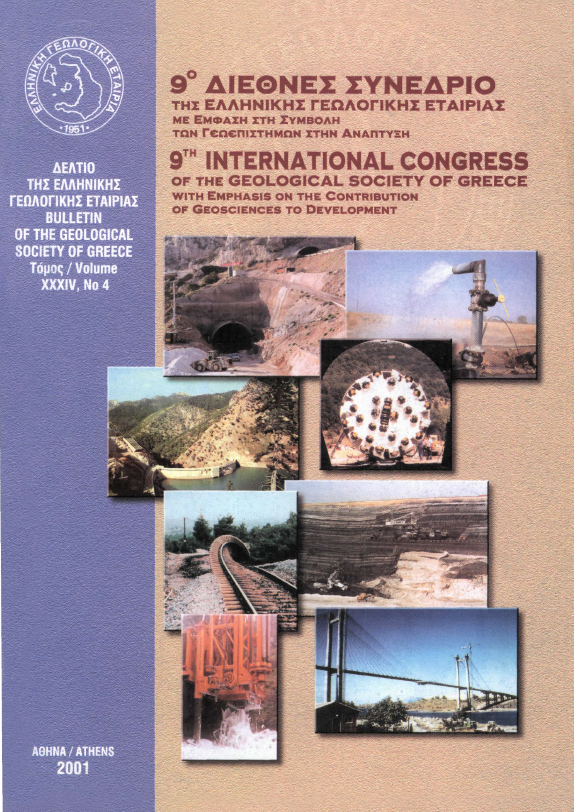DETERMINATION OF FAULT PLANE SOLUTIONS USING WAVEFORM AMPLITUDES AND RADIATION PATTERN
Abstract
In the present work a modified version of the program FPFIT (Reasenberg and Oppenheimer, 1985) is developed, in order to improve the calculation of the fault plane solutions. The method is applied on selected earthquakes from short period waveform data in the Mygdonia basin (N. Greece) as recorded by the permanent network of the Seismological Station of Aristotle University of Thessaloniki during the period 1989-1999. The proposed modification of the FPFIT program was developed in order to minimize the derivation of multiple solutions, as well as the uncertainties in the location of Ρ and Τ axis of the determined fault plane solutions. Compared to the original version of FPFIT the modified approach takes also into account the radiation pattern of SV and SH waves. For each earthquake horizontal and vertical components of each station were used and the first arrivals of Ρ and S waves were picked. Using the maximum peak-to-peak amplitude of Ρ and S waves the ratio Pmax/(S/\/2max+SE2max)1/2 was estimated, where S/Vmax and SEmax are the maximum amplitudes of the two horizontal components (N-S, E-W) for the S waves and Pmax is the maximum amplitude of the vertical one for the P- waves. This ratio for the observed data, as well as the corresponding ratio Prad/iS/Aad+SlAad)1'2 of the synthetic data was used as a weight for the determination of the observed and theoretical P-wave polarities, respectively. The method was tested using synthetic data. A significant improvement of the results was found, compared to the original version of FPFIT. In particular, an improved approximation of the input focal mechanism is found, without multiple solutions and the best-estimated Ρ and Τ axes exhibit much smaller uncertainties. The addition of noise in the synthetic data didn't significantly change the results concerning the fault plane solutions. Finally, we have applied the modified program on a real data set of earthquakes that occurred in the Mygdonia basin.
Article Details
- How to Cite
-
Vamvakaris, D. A., Papazachos, C. B., Karagianni, E. E., Scordilis, E. M., & Chatzidimitriou, P. M. (2004). DETERMINATION OF FAULT PLANE SOLUTIONS USING WAVEFORM AMPLITUDES AND RADIATION PATTERN. Bulletin of the Geological Society of Greece, 36(3), 1529–1538. https://doi.org/10.12681/bgsg.16544
- Section
- Seismology

This work is licensed under a Creative Commons Attribution-NonCommercial 4.0 International License.
Authors who publish with this journal agree to the following terms:
Authors retain copyright and grant the journal right of first publication with the work simultaneously licensed under a Creative Commons Attribution Non-Commercial License that allows others to share the work with an acknowledgement of the work's authorship and initial publication in this journal.
Authors are able to enter into separate, additional contractual arrangements for the non-exclusive distribution of the journal's published version of the work (e.g. post it to an institutional repository or publish it in a book), with an acknowledgement of its initial publication in this journal. Authors are permitted and encouraged to post their work online (preferably in institutional repositories or on their website) prior to and during the submission process, as it can lead to productive exchanges, as well as earlier and greater citation of published work.







